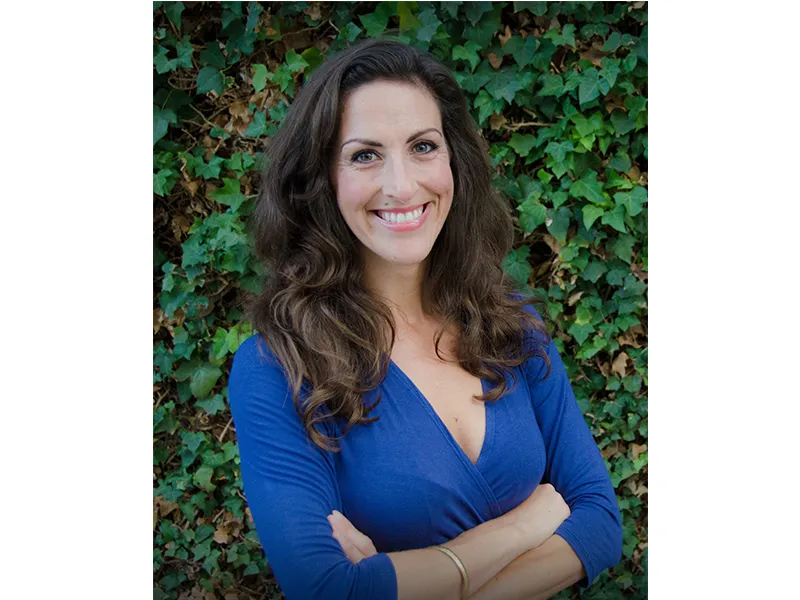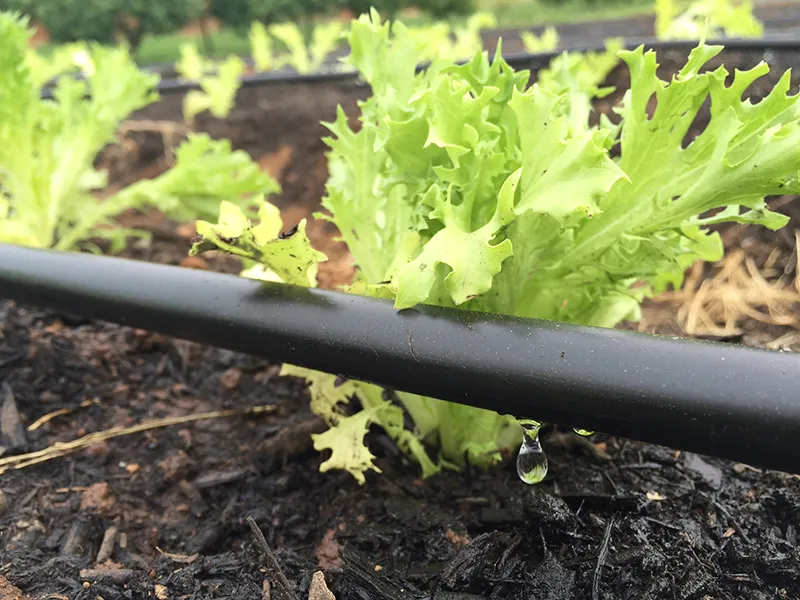A San Francisco Startup Puts Everything You Need for a Two-Acre Farm in a Shipping Container
Brandi DeCarli, cofounder of Farm From a Box, wants to deploy farm kits to governments, NGOs, schools and individuals
/https://tf-cmsv2-smithsonianmag-media.s3.amazonaws.com/filer/14/62/14621700-0673-4517-b17f-c7019513b4df/adamdrone_aug16.jpg)
It all started with shipping containers. Brandi DeCarli and Scott Thompson were working in Kisumu, Kenya on a youth center meant to provide basic resources like education, health and sport. It was to be built from shipping containers, set around a soccer field, but after some transparency issues with that nonprofit, DeCarli and Thompson decided they needed to follow a different idea, based on a company within their control. In the process, they’d noticed that access to food was still an issue, with a lack of the infrastructure needed for reliable crop production, especially in drought conditions.
“There’s a bit of a missing infrastructure that occurs in a lot of underdeveloped areas, and even here within the U.S,” says DeCarli. “So we thought, let’s provide communities with the tools they need to be able to grow and sustain their own crop so that the resilience is actually built up from the ground itself.”
Business partners who have worked in international development and nonprofits, they stuffed a whole two-acre farm capable of feeding 150 people into a shipping container, partnered with irrigation and solar companies, and founded Farm From a Box. I sat down with DeCarli in San Francisco, where the for-profit benefit corporation is based, to hear about the $50,000 kit, what makes it special, and how it could be useful to governments, NGOs, schools, and even individuals who want to start a farm.
Tell me a little bit about the problem you’re trying to address here.
Whittled down into two pretty core ones is the lack of infrastructure to support local production, and trying to make the distribution a little bit more even by localizing food production. Setting aside the environmental factors, that we’ve got to produce our food in a much more sustainable way, we also localize the growth a bit more. We’re shipping in food from all over the place right now, and it’s all going into grocery stores. By localizing some of our growth, it’s really contributing to resilience by decentralizing our food production. The more that we actually localize our food production, the more that we empower ourselves within our community, to be able to grow and sustain our own crop, the better we will all be, within the states and internationally.
Second is the beauty of soil. The soil needs us and we need to be able to actively work to rebuild it. We can turn carbon into a food-producing asset, by rebuilding the health of the soil, so that’s something that’s important to us.
That applies to connecting schools to healthy food so that they are not getting hyper processed food. That applies for food deserts here within the states. It applies to areas like where we were working in Ethiopia [a test plot for Farm From a Box had to be cancelled, due to ethnic protests there], where things like drip irrigation can just be completely transformational.
So we thought, what if we took a deliverable infrastructure, but dedicated it to being a closed-loop, off-grid food production system, housed within a shipping container.
Who are you building this for? Who is your ideal customer?
Here within the U.S., most of our interest is coming from individuals and families that are looking to make unproductive land productive and be able to grow their own food, but also dedicate a large portion of that two acres to commercial use. Internationally, it tends to be a little bit more community focused, with more interest from governments for development projects and refugee camps.
What’s contained in the shipping container?
We tried to design the whole thing so that if you literally just have a plot of land, this kit would be everything that you need to get yourself started, with the exception of seeds. It can be narrowed down to an off grid power system, a complete water system with a solar powered pump and drip irrigation system, and connectivity.
Drip irrigation can save so much water. It can also make sure that the water that is being used is targeted directly to the roots of the plants. It extends the growing season in a lot of different areas, so that opens up new possibilities for different types of crops to be grown.
Every box also comes with its own renewable energy system. Everything is solar. We’ve got three kilowatts of solar energy pre-installed on the actual kit. You have power access to not only power the pump, you can also power things inside of the box. That powers the WiFi connectivity, so there’s information access as well, to be able to monitor the farm remotely, but also to get information in terms of market prices or training systems.
We have a three-part training program that comes with the box. One: Covering sustainable farming, making sure everyone knows a little bit in terms of crop rotation, and composting, and intercropping. Two: Covering technology use and maintenance, making sure that the individuals know how to maintain and troubleshoot all of the components of the farm. Three: Farming as an enterprise, making sure that there is a market-based approach to farming.
Agriculture has a lot of variables, which means there’ll never be a one-size-fits-all sort of solution. So we designed the box to act as a template so that we could plug in, plug out different components to fit the local climate, the user, the need. We can plug in a water purification system, if that’s what the user would like or if that is applicable to the area. A new thing that we’re deploying now is an internal cold storage system to make sure that we’re able to keep the crops fresher, longer, post harvest, before the crops actually get to market. All of those things affect the ultimate price of the box, and that’s why we have a range from about $50,000 to $60,000. If you were to a la carte all the different components that we put into this kit, it would end up costing you more than what we’re charging.

Where has it been deployed so far?
Our first prototype, that we affectionately call Adam, is already active in Sonoma County, on a school property called Shone Farm. That one’s going amazingly well. It’s actually more efficient than we had even planned, which is a good problem to have. The production has been really high, and the energy output has been really high, and we’ve been able to save a lot of water using that system. All crops grown on the 2-acre test site with “Adam” go towards supporting the Shone Farm CSA and the Culinary Arts Program.
We initially planned on deploying in California and in the rift valley of Ethiopia. We’re working with the international rescue committee to pilot another unit with resettled refugees from Nepal, Bhutan and Afghanistan here in California, in West Sacramento. We’re also going to deploy one in Virginia, working with veterans, and there are a few international sites that we’re in discussions with.

What do the next few years look like?
We’re about to start taking deposits on our 2017 production of the units that we’re launching of those two [Virginia and California]. So we should get those going out pretty soon. We’ve implemented our full IOT system in terms of field data and machine data, we’ve built up a platform for being able to monitor everything remotely, and we’ve streamlined our manufacturing and our supply chain.
While we’re starting with the 20-foot model that serves two acres, we do have plans for developing a smaller model. We want to make sure that we’re serving the broader range, like for urban farms that might not have two-acre access, smaller areas where land is also at a premium. Refugee camps don’t have a lot of space in them either. So making sure that we offer a smaller option is going to be a good move for us.
When you envision further down the road, how big do you see this being?
The global need to provide food is endless, and growing. I think that we’ve got a lot of potential for being able to develop many different ways in which we can help strengthen local food production in a sustainable way, regardless of who it is we’re working with. So we’re not planning on stopping any time soon.

